I am an aspiring birder; actually, I seem to be perpetually stuck at the “beginning birder” level. I enjoy and recognize the birds that frequent my backyard feeding station. And when hiking, I enjoy listening to birdsong and calls… but I rarely catch sight of those singing birds. Most of the time they seem to be perched high above me and hidden by the tree’s foliage. However in Ohio there is an annual birding event called, The Biggest Week in American Birding, and this year I decided to give it a try.
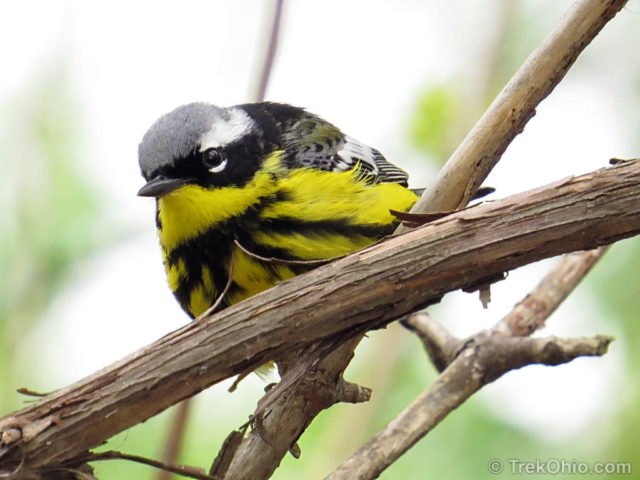
The Warbler Migration
The central location for the event is at the Magee Marsh Wildlife Area, and the occasion for the gathering is the annual migration of warblers. Warblers are very small, insect-eating birds. And in the spring their plumage is at its showiest to catch the eye of a prospective mate. Many are on their way north to Canada and Alaska to feast on insects and to breed. However the Great Lakes are a formidable obstacle for such small birds. So in May the warblers pause on the southern shores of these lakes to fatten up on insects to fuel their flight. If you haven’t been to any of the Great Lakes, you might be surprised at how large they are. The far shore is so far away that you can’t see across. Luckily for these little birds, there are some islands where they can rest on the way over.
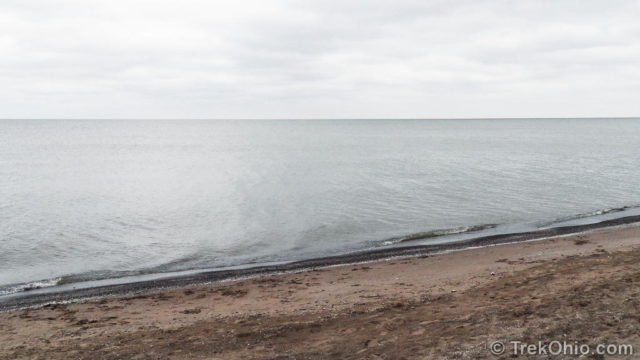
Because these little birds take a break in their migration just south of the Great Lakes, this region is sometimes called the Warbler Capital of the World. However most of the time I’ve heard this title applied specifically to northwestern Ohio. Although warblers gather in wetlands all over northwestern Ohio, I believe the best site to view them is Magee Marsh (pronounced muh-GEE). At Magee Marsh there is a boardwalk that is bordered by shrubs and small trees. This means that the warblers that are foraging for food at Magee Marsh are much closer to eye level than they would be at many other sites.
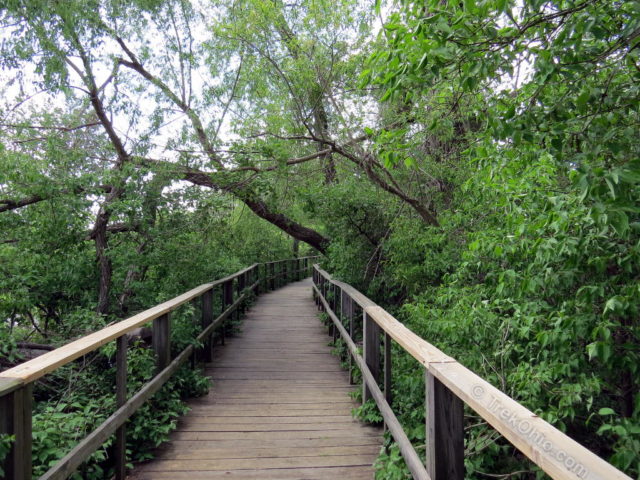
The Organized Event
The Biggest Week in American Birding is an organized event. Its sponsors include the following organizations:
- Black Swamp Bird Observatory,
- Maumee Bay Lodge & Conference Center,
- Destination Toledo, and
- Lake Erie Shores & Islands
The “biggest week” is so big that it lasts ten days. In 2013 it was held from Friday, May 3rd, through Sunday, May 12th. Individuals who register for the event can choose from a host of activities, including guided field trips, half-day trips, Lake Erie island birding trips, talks by keynote speakers, and workshops, in addition to just heading out on their own to look for birds. As a beginning birder I was feeling pretty tentative about the whole thing, so here’s what I did. Without registering Bob and I just showed up at the boardwalk of Magee Marsh on the next-to-the-last day of the event. Having never been to Magee Marsh before, once we arrived at the Wildlife Area, we weren’t sure where the boardwalk was. When we stopped to ask directions, we were told which way to go… oh, and that we would know we were in the right place when we came to a parking lot with about 500 cars in it.
I was a little worried about the crowds. Would we find a parking spot? How crowded would the boardwalk be? It turns that we didn’t have any trouble parking. Although there were crowds, the people were really nice. And whenever we saw a group of people gathering some place that was a pretty good sign that there were warblers to be seen there.
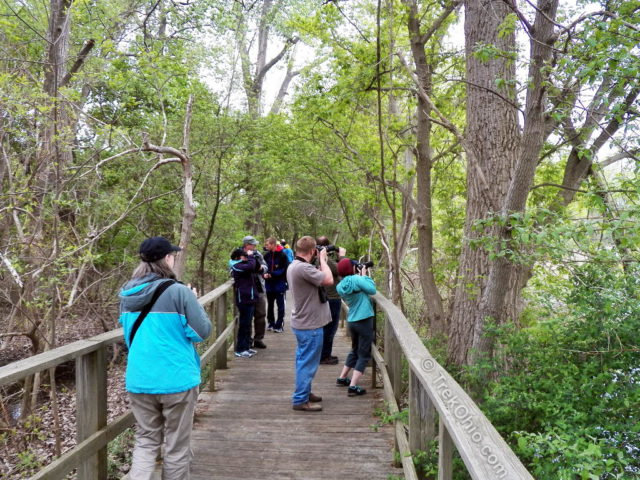
The other birders were happy to point out where warblers were flitting about and to identify them. And it just felt like a very festive atmosphere. People were relaxed and enjoying themselves with others who shared their interests.
There were clear parts of the boardwalk (which meant there were no warblers there), and other areas where there were just a few people. Here are a few more photos showing what the boardwalk was like.
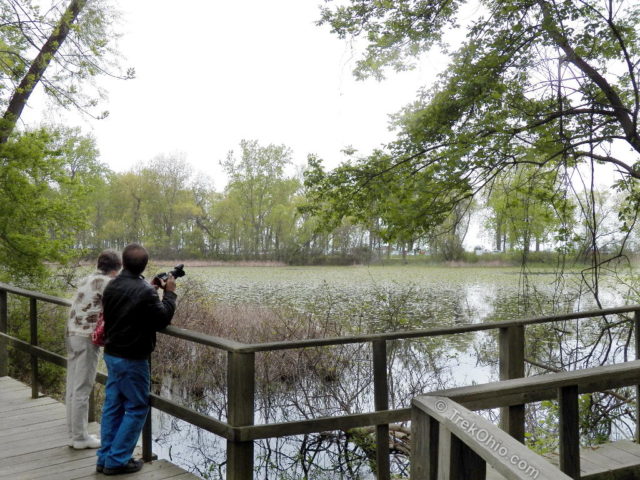
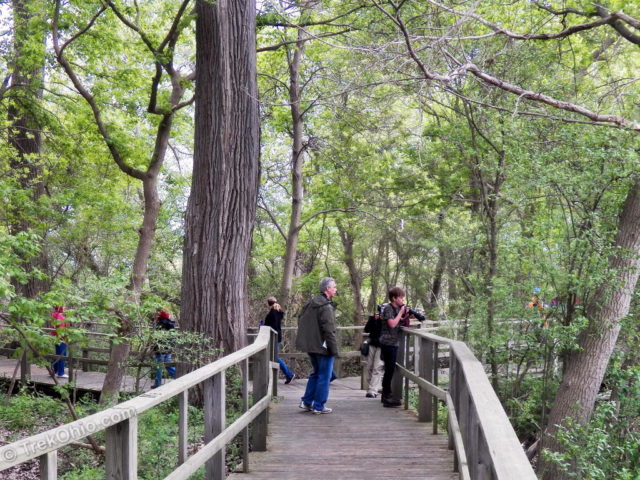
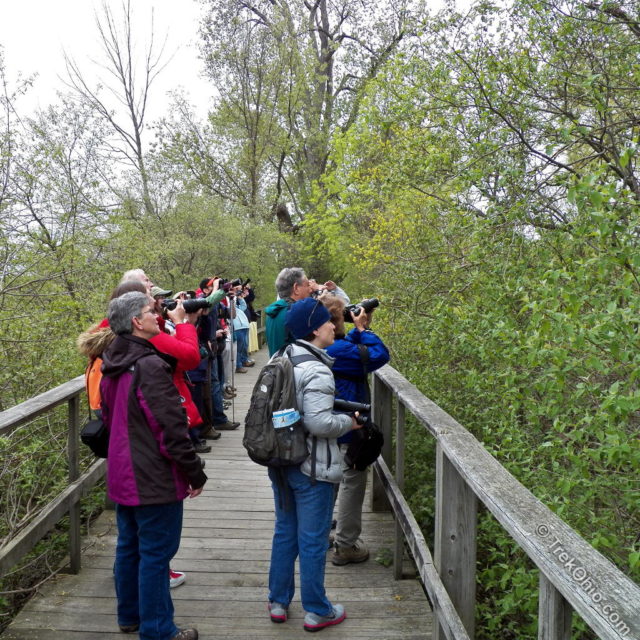
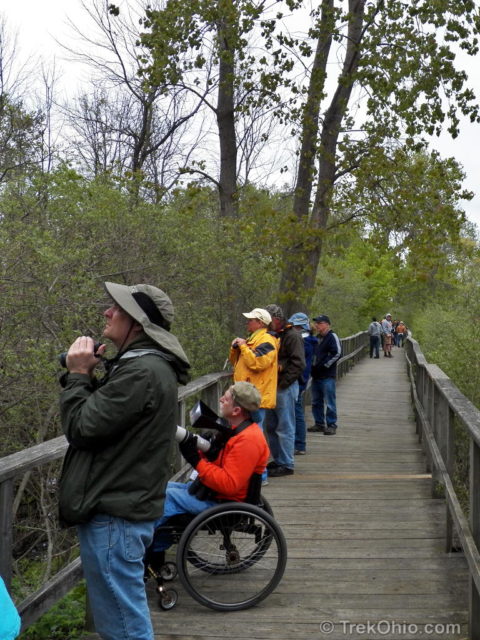
Birds that I saw
Previous to going to the Biggest Week in American Birding, I had only seen one species of warbler in the wild: the Yellow warbler. Although I live near an area where Prothonotary warblers allegedly nest, I’ve never laid eyes on one… yes, I’m that good. Anyway in less than three hours at Magee Marsh, Bob and I saw and photographed the birds pictured on this page. All the photos were taken with point-and-shoot cameras. Because most of the birds were near eye level and close to the boardwalk, the conditions were ideal for photographing them. However as a rank amateur at photographing warblers, I have to say the little creatures don’t cooperate that much! They are continually flitting about in pursuit of insects. I can’t tell you how many photos I took of empty branches where warblers used to be before I pushed the shutter button.
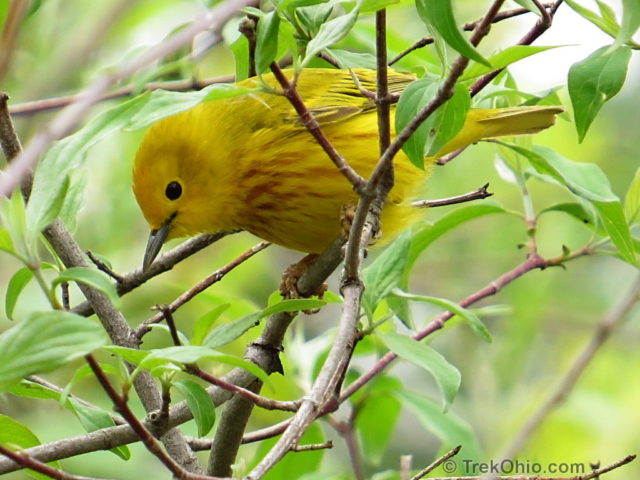
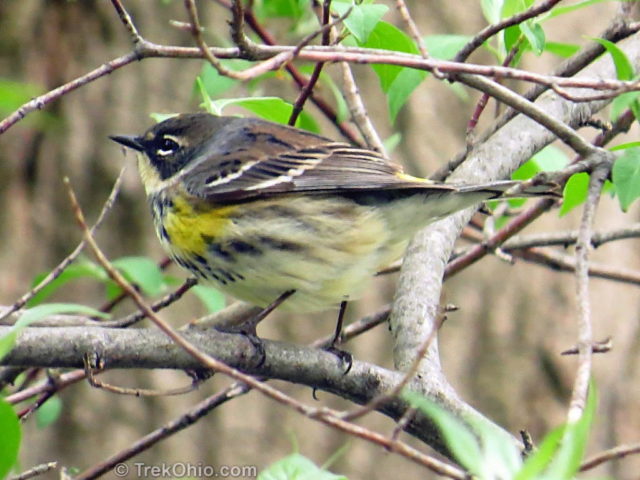
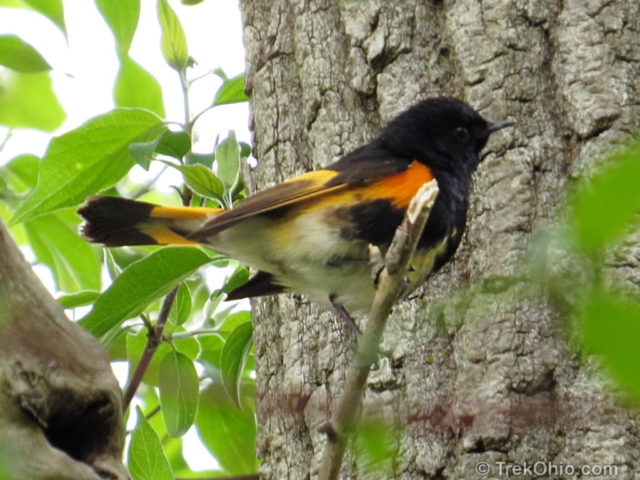
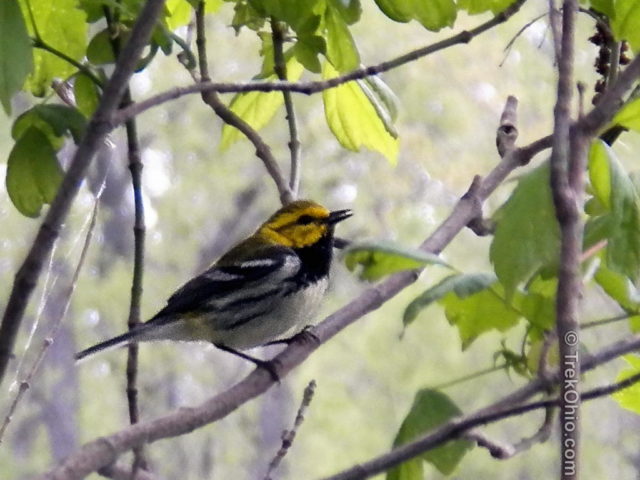
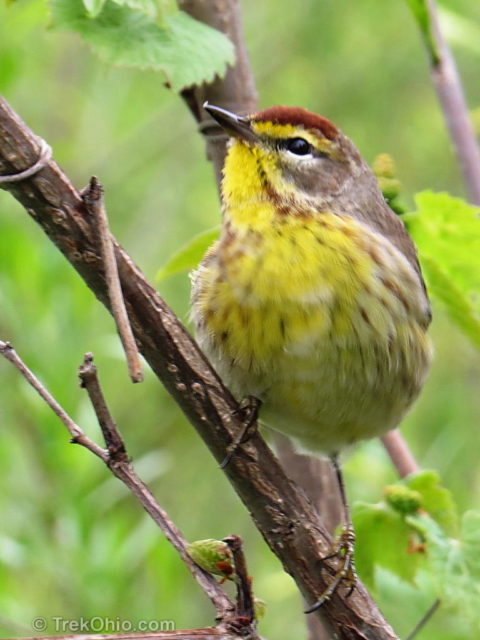
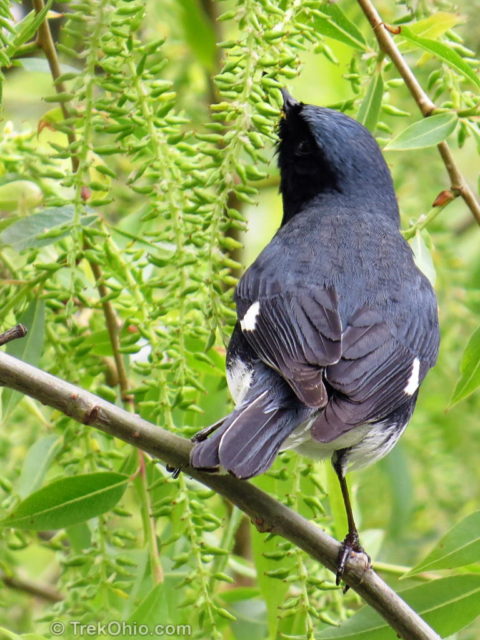
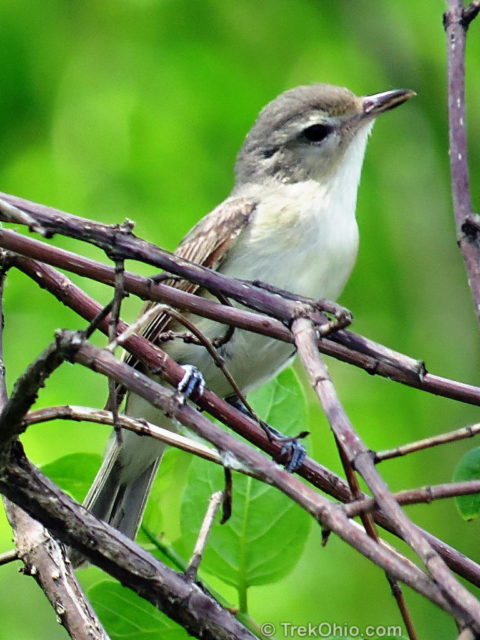
Bob and I both enjoyed ourselves, so we will probably go back. I’m even inclined to register next time and maybe take in a program or two. This past year there were registered participants from 46 states and at least 13 countries.
For information on Magee Marsh’s location and for a fuller description of this wildlife area, check out our post, Magee Marsh Wildlife Area.
Additional information
- TrekOhio: Magee Marsh Wildlife Area
- ODNR: Magee Marsh Wildlife Area
- Event’s companion website: Biggest Week in American Birding
- Facebook: The Biggest Week In American Birding
- Twitter: Biggest Week (BiggestWeek) (tweets from the event’s organizers)
- Biggest Week in American Birding Visitor Guide (2013)
- Birding Magee Marsh
- Black Swamp Bird Observatory
- Wikipedia: Warbler
More on Birds
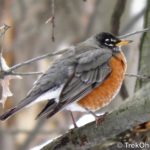
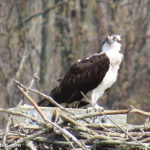
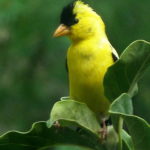
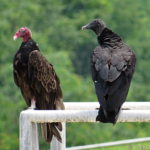
Great post and great photos Deb and Bob. I too, am interested in birding but always seem to have my eyes on the ground. I guess I’ve been living under a rock, because I didn’t realize this was such a big deal until being added to the birding Facebook group! I also saw a clip about it on a morning news show. I’m really enjoying your blog. It makes me want to get out of southern Ohio and see some different landscapes.
Jill, thanks! One of the big motivators in starting this blog was to encourage ourselves to see more of the natural areas that Ohio has to offer.
I have been slowly adding myself to nature-related groups at Facebook, but I don’t think I’ve stumbled across the birding group yet. Is is birding everywhere, or just Ohio?
Fantastic post and awesome warbler shots, you did great! Unless there’s one filed away on my harddrive, I’ve never photographed a warbler, not sure if we have them. With so many warblers, this is definitely something for me to research for my area. Loved the boardwalk shots, what a beautiful place to bird-watch.
So many friends and family have sent newspaper articles or links to stories about this wonderful place and time….Warbler time at Magee Marsh. Of course, I already knew about it. I have a visit on my list of things to do.
How wonderful — and what beautiful captures! Such sweethearts…. I wish I knew more, definitely.
Beautiful shots of beautiful birds…they are tiny and move fast! I saw a Baltimore oriole streak past me today at the park-another gorgeous bird!
Deb: I believe your “Golden-cheeked Warbler” was in fact a Black-throated Green Warbler. The very rare Golden-cheeked warbler is found in Texas but not in Ohio.
Keep up your great work with Trek Ohio. Ian Adams
Ian, thank you for your kind words about our site and for correcting my warbler identification; I’ve updated the article.
I knew about this event for a long time and thought of going too. Your post today is very descriptive and full of good information. I would like to plus + or like all your photographs the ones of the birds are wonderful.
Patricia, I have added a mental “plus” for all the photos. 🙂 Thanks for taking the time to write a comment. I had been thinking about going there for the past several years, but frankly I felt a bit intimidated. I thought that maybe the crowds would be oppressive, and I knew I wouldn’t be in the same league as most of the birders there. But once we finally checked it out, it wasn’t intimidating at all. I’m really glad that we went.